Dealing with mold in your home, or in your body, can be an overwhelming and confusing process. If you’ve been diagnosed with or suspect a mold illness, then you may have been told to test your home, work, or car, for mold. But what’s the best way to do this? Some people say ERMI is the only accurate way to test for mold. Medical doctors love the ERMI! Some people say ERMI is not regulated by the industry, and it gives inaccurate readings. Others say that air samples are the way to go. Yet others say air samples are useless and give false negatives way too often. Then there are companies selling DIY Petri dishes, enabling you to test for yourself, but Indoor Air Quality (IAQ) professionals say they’re worthless. So what are you supposed to do?
There are a whole lot of opinions out there on how to test for mold, so I wanted to take a moment to clear up the confusion. In this post, I’ll discuss the various testing methods, the advantages and disadvantages of each, and which may be best for your situation. As part of my ‘healthy home’ surveys, I test for mold in Boise, Idaho, and most areas West of the Rockies. Trust that no climate or location is free from mold problems.
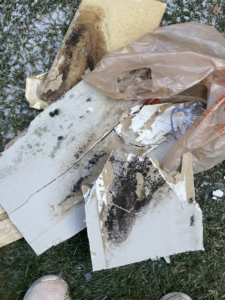
Let’s start with a typical scenario. You’re suspicious of mold growth inside your home for some reason. This generally happens for one of the following reasons:
- Someone in the home is sick and can’t seem to recover.
- You smell something musty.
- You see something that looks suspicious.
- You had a leak or some kind of water intrusion and you’re concerned.
These are all important reasons to get your home tested. At this point, most of us will look online for a local mold testing company. Said company shows up to your home and takes air samples in the middle of several rooms, and one outside. They send these samples to a lab and get the results back in a few days. You’ll likely spend about $500-$700 on this testing. Here’s the problem – randomly taking samples in the middle of a room tells you nothing about what’s going on in the hidden spaces of your home.
You could have mold behind the walls, in the crawl space, in the attic, under the carpet, under the sink, or any hidden space. In fact, these are the places that mold likes to grow the most! Mold loves dark, warm, damp spaces. If you saw mold in the middle of your room, you wouldn’t need to test it, you’d just need to get rid of it!
Some mold inspectors argue that air samples are indeed accurate because what you want to know is what you’re breathing in those spaces. If you were to take a sample in the middle of the living room, for example, and there is a hidden mold problem in the bathroom upstairs, you may not pick up any mold spores in the living room due to how mold spores travel. You are, however, being exposed to those spores in the bathroom.
Now if you take an air sample in the bathroom, you will be more likely to capture some of those spores on the air sample – maybe. I say maybe, because an air sample is only a quick snapshot in time. If no one has used the shower in several days, and there is little air disturbance in the area, those mold spores (which are a problem) may all be just hanging out on the floor. An air sample is generally taken at about 3 feet, and heavy spores like Stachybotrys, don’t hang out in the air at 3 feet, they sink to the floor. So if the air is relatively undisturbed, this air sample can completely miss a potentially serious issue!
Air samples also do not test for mold fragments. As mold dries, it becomes friable and can break off into pieces. These pieces are hazardous and can be associated with large amounts of mycotoxins, the chemicals in mold that make you sick. So if you have mold from a previous water event, even though it’s old and dead, it’s still a problem. If there are lots of fragments in the air, an air sample may miss them entirely.
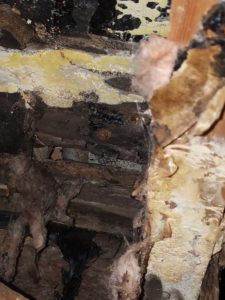
Hidden Mold in Ceiling
Now, air samples aren’t entirely worthless. If you know how, where, and when to use them, they can be quite valuable. The key is to know how to do this accurately, which, unfortunately, most mold inspectors are not taught. So how do you know? It’s all about the visual inspection.
A thorough visual inspection is the most important part of a home evaluation. A good inspector will spend several hours going into every part of your home. They’ll look under the sinks, cabinets, behind the refrigerator, washing machine, stove, and dishwasher. They’ll get up into the attic, down into the crawl space, and look at every inch of the foundation and perimeter of the home.
The inspector should have a moisture meter, a flashlight, and an infrared camera to find all signs of water damage or water intrusion. And because of the way our homes are built, there will often be several signs. After a thorough evaluation of the home, the inspector will have a better idea of where potential microbial growth may be, and will test those areas accordingly. This rarely means testing the middle of the room. Rather, the inspector will do very specific targeted testing where there are signs of moisture. This may be under a sink, in the crawl space, in a wall cavity, or other areas of concern.
The inspector may also ‘disturb’ the air. Using a clipboard, fan, or other items to move the air around will help those mold spores move around the space and they have a better chance of being captured on an air sample. Air samples therefore can be useful, when used appropriately. Even with these practices however, they can still give false negatives
Ok so what about the ERMI then? Since doctors prefer the ERMI, isn’t it better? Let’s take moment to explain what the ERMI test is. ERMI stands for ‘Environmental Relative Moldiness Index’. It was developed as a research tool to identify health problems associated with mold exposure. Researchers tested 1096 homes across the US for 36 mold species and then compared them to each other, thus, the relative moldiness index.
The intent of this research was to identify a more accurate method of testing mold given the drawbacks of air sampling. To obtain a sample, an inspector (or homeowner) can either use a canister to collect dust from a vacuum sample, or a Swiffer cloth swiped among several different surfaces around the home. These samples are then sent to a lab for analysis. There are several advantages to using an ERMI.
- You don’t need special equipment to obtain a sample, anyone can do it.
- You don’t need to hire a professional, so it can save you money. Most ERMI tests cost about $250 – $350.
- Your test results will come back with a score suggesting whether or not you have a problem. (An air sample does not.)
- It’s the preferred testing method of numerous medical professionals.
There are however, numerous disadvantages with the ERMI. These are not well understood by the medical community and can cause a lot of confusion and heartache for those trying to get a handle on their healing journey. Here are some of the problems:
- The way the ERMI is scored is meaningless. The ‘Water Damaged Building Molds’ are subtracted from the ‘Common Outdoor Molds’ to calculate the score. This has inherent flaws.
- There is a +/-3 point deviation on the score making it challenging to understand.
- Collecting dust in a home that could have been there for years can skew the results.
- Using a Swiffer cloth can create a higher than accurate score due to the ‘washing’ process of testing the cloth.
- Collecting in ‘high-heat’ locations like the kitchen and bathroom can also skew the results.
- Most of the time, homeowners take one sample for the whole house which does not tell you where the mold is coming from.
This all means that the ‘official’ score you receive on your sample can be very misleading. The conventional thought among the medical community is that your ERMI score should be under a 2, otherwise you have an issue and you must remediate the home, or move. What many professionals do not understand is that it’s not so much about the score, but about the specific mold species and quantities found. It’s all about how to interpret the ERMI, not about the score!
Medical professionals don’t have the time to learn how to interpret ERMI’s, they’re busy enough treating their patients. Having a skilled IAQ professional help you interpret your ERMI is the best thing you can do. It’s not intuitive, it takes most of us years to become proficient in understanding how to read them. The below lab report for example shows a very low overall score, indicating there is no mold issue in this home. However, very high levels of the notorious ‘Black Mold’ (aka Stachybotrys) was found. This suggest there is indeed a problem going on inside this home. Further investigation must happen.
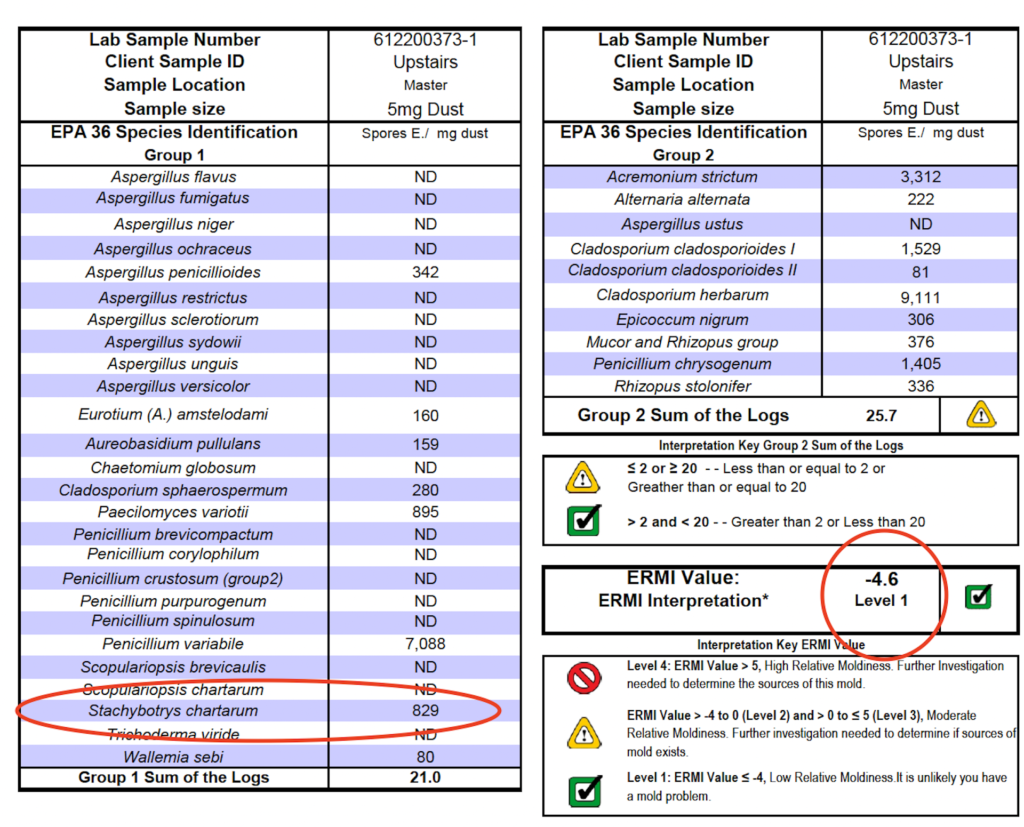
ERMI Report Showing a Low Score, but High ‘Black Mold’
So yes, an ERMI can be quite useful, but just like with air samples, they must be used appropriately (several samples in each home) and interpreted correctly!
There are a few other testing methods I’d like to touch on briefly. I mentioned the DIY Petri dishes above. These have become quite popular in the last few years. They’re inexpensive and anyone can purchase them. But, as with air samples and ERMI’s, they have their advantages and disadvantages, of course! The advantages of the Petri dishes are as follows:
- They’re inexpensive.
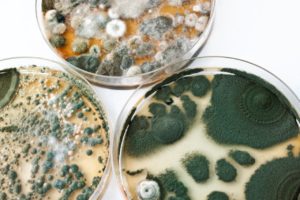
- They’re accessible to anyone.
- You don’t have to hire a professional.
- You can send them to a lab for further analysis.
The disadvantages to these dishes are:
- They only capture what happens to be passing by the dish at that moment.
- They generally miss the heavy spores like Stachybotrys.
- Different species require different conditions to grow, so if the temperature is not correct for that species, you will miss it.
- Given that the mold has an ‘agar’ medium to consume, it can grow quite quickly and give an artificially elevated result.
- They only capture ‘viable’ or ‘living’ spores. They do not capture ‘dead’ spores, which are still a serious problem.
These plates are not to be used to determine whether your home has a significant mold issue. They are not accurate enough for that. They may be used to give you some information, but really, given their disadvantages, I don’t recommend them.
‘Direct’ samples can be used when you want to confirm that a suspicious-looking spot is or is not microbial growth. These samples would include things like a tape-lift, a swab, or a bulk sample. Anyone can order a tape-lift kit and have it analyzed by a lab. A swab or bulk sample usually requires a professional who has access to a lab for analysis. These samples are relatively inexpensive (generally around $30-$80). They are only used for very specific situations. They will not tell you if your home has an overall microbial issue. They will tell you if that suspicious-looking spot is in fact mold or not. It will also tell you what type of mold strains they are, and how much of them were collected in the sample. This is important information to know. A positive test will confirm that there is water damage and that further investigation is needed.
As you can see, testing for mold is complicated. There is so much confusion and misunderstanding even among professionals. At the end of the day, if you are concerned about a potential issue in your home, the absolute best thing you can do is hire a qualified inspector. Remember, they should spend many hours investigating your home. They should look in every closet, bathroom, cabinet, crawl space, attic, roof, and every nook and cranny in your home. If that does not happen, then the investigation was not complete.
If you hire an inspector that says they’re going to take air samples in several rooms, and that’s all they do, do not hire them! Before having someone come inspect your home, ask them questions about their process. If they explain anything less than a complete and thorough investigation, then keep looking. Also, ask about their testing process. Do they use an ERMI, air samples, or direct sampling? How do they decide which method to use? If they can’t explain everything I listed above, then keep looking! If you decide to do some testing for yourself, I suggest at least consulting with an IAQ expert before and after. They can help guide you about how and where to collect the samples, and then how to interpret them.
Mold is a very complex topic. When you’re dealing with a mold illness, you want to get to the bottom of it right away. This is one area where investing your money in the most qualified professional you can find will be worth it. You’ll save yourself a lot of money in the long run by doing it right the first time. If you’re concerned about water damage or mold in your home, call us today– we’re happy to help!

Cathy Cooke, BCHN, BBEC Holistic Nutritionist and Building Biologist is the founder of Whole Home and Body Health which provides EMF Assessments, Mold Testing, and Nutrition and Health Consulting located in Boise, Idaho. Cathy is available for consulting via skype and phone, and is also willing to travel as needed for home assessments. Schedule an appointment today!

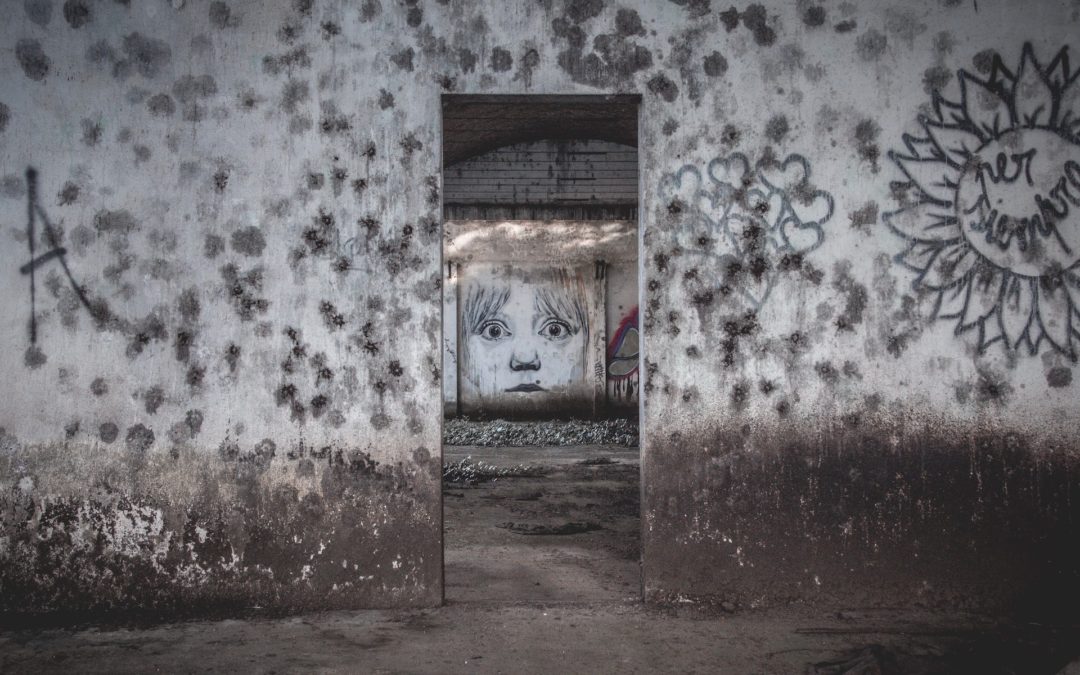
Recent Comments